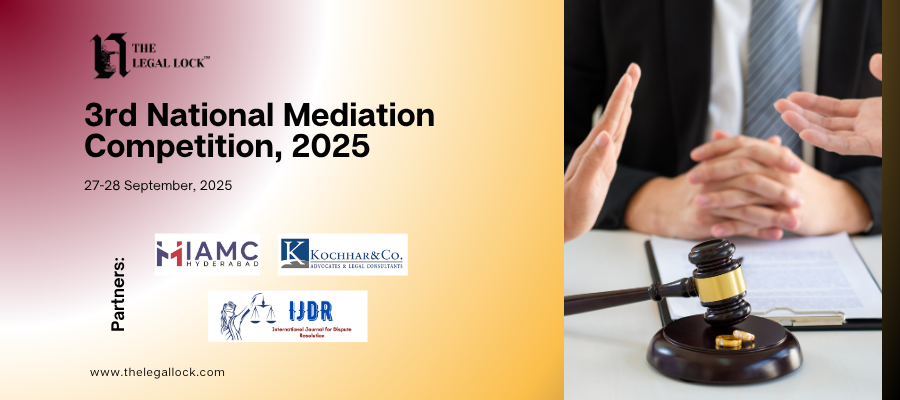Facts-
The case starts from the time Mr. N. L Patel was appointed as the Chief Judicial Magistrate. After being appointed as the CJM he found that the local police were not cooperating with the court orders in issuing warrants, giving notice to the people as a result of which court trials were delayed. A complaint was then made by the CJM to the district superintendent of police and to the director general of Police but no real change did happen. One Mr. SR Sharma, a police inspector was annoyed by these complaints and therefore he withdrew the constables posted at the CJM’s court. On April 1989, the CJM filed complaints against the inspector and other police officials for obstructing the process of the court. On 25th July, 1989 CJM directed the police to register a criminal complaint against 14 persons who had interfered with the court trials. An apology was given to the CJM and he instructed the police inspector to drop the cases. The police inspector through the district superintendent of police made a complain to the registrar of the High court against the CJM and a consequence tension grew between the CJM and the police inspectors.
In September 1989, Sharma met CJM in his chamber and shortly afterwards Sharma invited Patel to the police headquarters. As CJM arrived at the inspector’s chamber he was compelled to consume liquor. When the CJM resisted he was harassed, assaulted and handcuffed with a rope by the inspector Sharma and other police officials and further sent for medical examination. A photographer was also arranged to take his photographs during the medical examination. And it remains unclear whether the CJM or the inspector told to arrange the photographers.
As there was serious dispute between the parties with regard to the facts of the case, the apex court appointed a judge of the Allahabad High court to inquire about the incident and submit a report to the court. as a result of which a 140-page report was submitted by the Court.
The report established the following facts-That during the time the CJM arrived in the inspectors’ chamber he was forced to consume Liquor and after he was taken to the hospital medical injuries were found on his body and when the CJM tried to contact the district judge he was not allowed to do so. A panchnama showing the drunken state of the CJM was also signed by two people. Further the CJM’s blood was taken for medical examination and his report stated that alcohol was found in his blood.
Issue-
- Whether the SC under Art 129 derives its inherent per for contempt?
- Whether the courts power to punish for its contempt gets restricted under the Contempt of courts Act 1971?
- Whether the actions of the inspector and police officials amounted to contempt of Court and interfered with the process of judiciary?
- What punishment should be awarded to contemner’s who are guilty of Contempt?
Argument from both sides-
Arguments made by the Police inspector and the Officials-
- That the apex court didn’t have any power or jurisdiction to deal with cases of Contempt of the concerned court and that the powers regarding contempt are demarcated under Articles 129 and 215 demarcate the respective areas of the Apex court and High courts.
- Despite the Fact the SC is adjudged as the court of record it cannot derive any of its powers from the constitution or any statute to adjudge the contempt of any subordinate courts.
- The contemner’s further argued that under Section 15 of the contempt of Courts Act the SC has no power to deal with contempt of the Subordinate courts. They further argued that there are no inherent powers to decide when this jurisdiction is not conferred by any law or statute prevalent at that time.
- The decision with regard to inherent powers of the SC in case of Art 129 was foreclosed with the case of K.L. Gauba v. The Honable Chief Justice and Judges of the High Court o]’ judicature at Lahore & Anr. And that this apex court being the successor of the federal court should follow the decision of its earlier court.
- There is no case of universal jurisdiction as powers of all the courts is limited and that includes the SC also.
- Art 142 cannot be contrary to any statutory provisions established and the findings of the Comission by the Allahabad HC judge cannot be taken into account.
Argument made by the Attorney general on behalf of the CJM-
- The power to punish for Contempt is a special jurisdiction of the SC. Further argued that the Contempt of Courts Act of 1971 recognises the power of the SC to punish for its contempt of subordinate courts.
- Inherent power of the apex court has been derived from art 129 of the constitution.
- The apex court has ample power under Art 142 of the constitution to punish for contempt of its subordinate courts.
Judgment-
- The court laid out certain guidelines for preserving the independence of Judiciary and said that the definition of criminal contempt is wide enough to deal with the administration of Justice and as the public has a vital stake to deal with the administration of Justice, hence the court can take cognizance of the matter when it deals with contempt actions of the Judiciary.
- Also held that under Art 129 and Art 215 the SC has the power to punish for its contempt as well as the contempt of itself both for the Sc and the High court. And art 136 gives enough appellate power to the Sc to entertain appeal from any court. Further the court also held that the contempt of courts Act doesn’t have any power that curtails the action of the court.
- Held that the central legislature has no powers to take the powers of the court in deciding the cases regarding the contempt of Court. Art 129 gives the inclusive power to the Sc to decide for its contempt.
- Art 374 was enacted to implement the transition phase from the SC to the federal court and the Sc is further not bound by the decisions of the federal court.
- In the case of the apex court as it is the most superior court of the country it cannot be said that it has limited jurisdiction and that on the contrary the apex court can determine on its own jurisdiction.
Analysis-
This case shows the impact of the excessive interference of the executive in the administration of Justice. The gruesome incident subverted the dignity of the courts at the hands of the police. The case also depicts the inclusive powers of the judiciary under Art 129 of the constitution. It further gives out guidelines for protecting the judges against the harassment caused by other organs of the govt. like the police in the present case.









